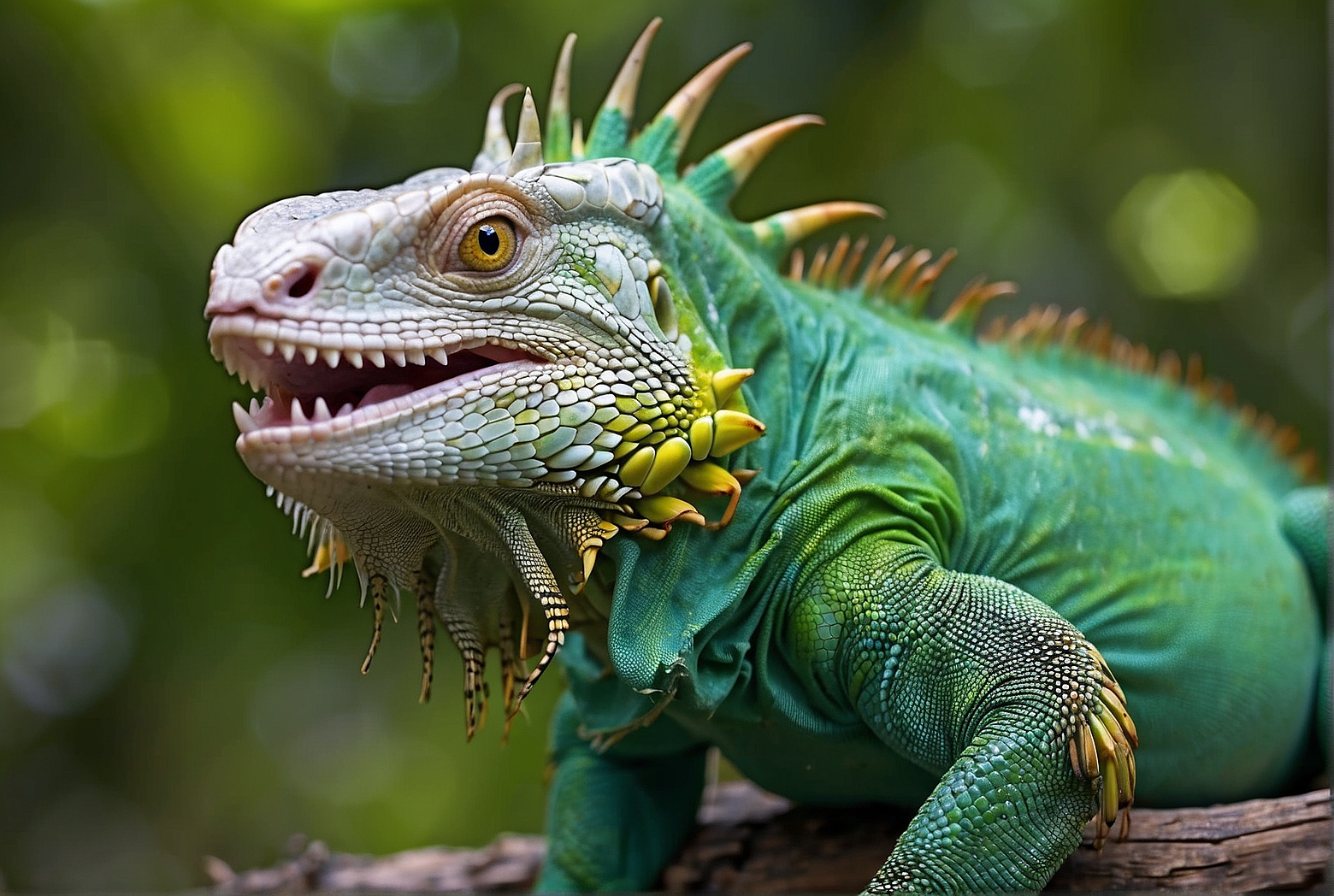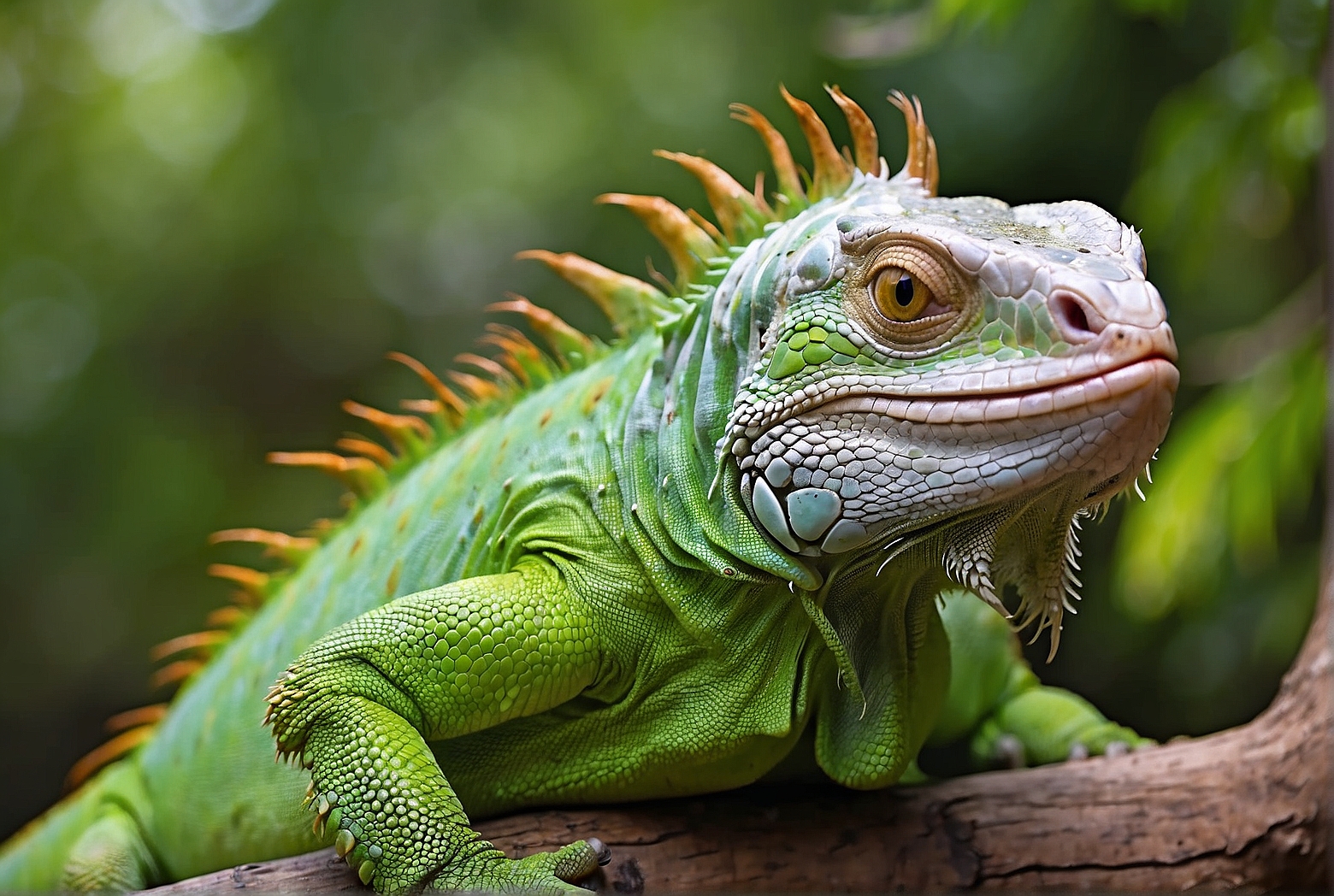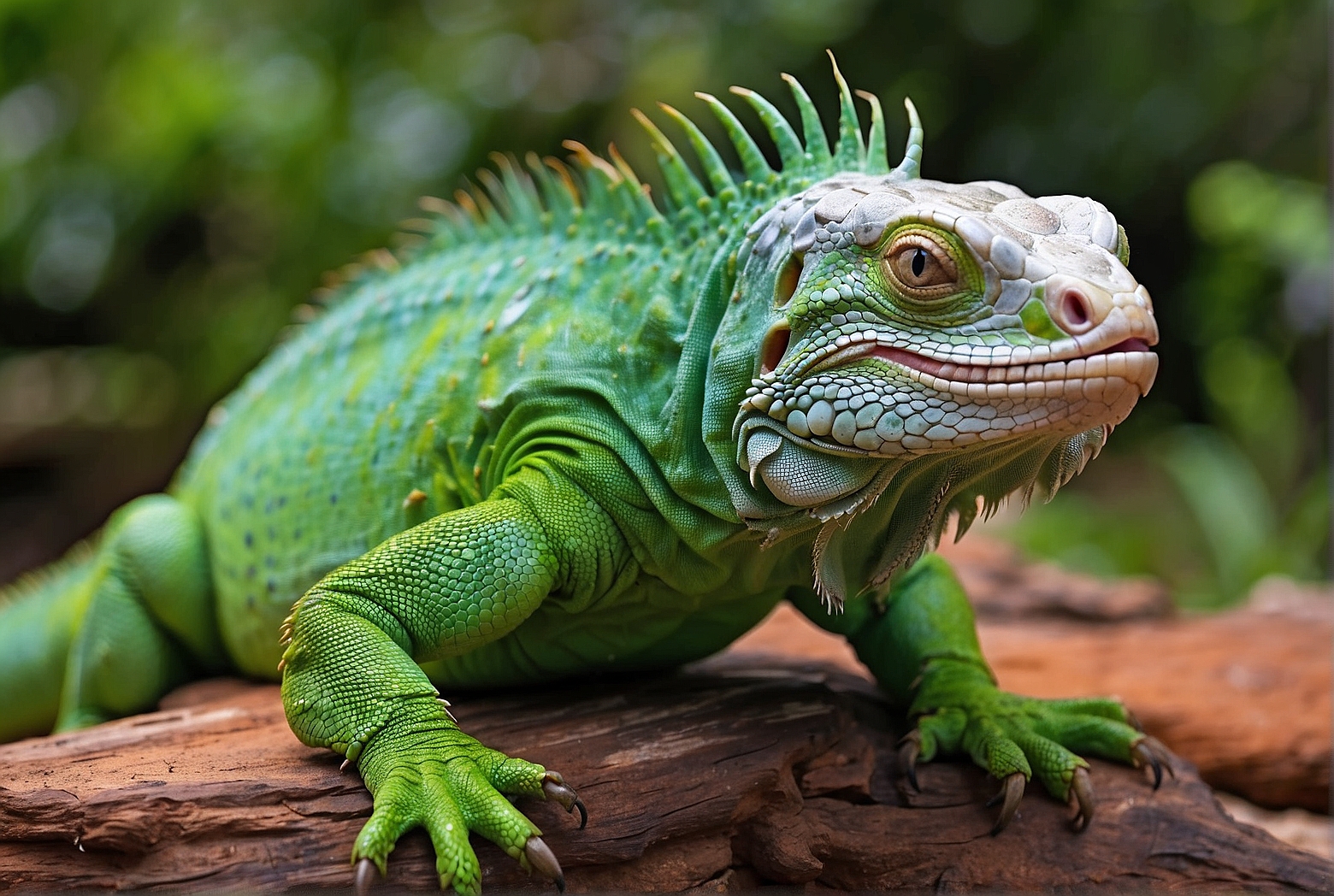Have you ever wondered what green iguanas feast on? Well, it turns out that these fascinating reptiles have quite the appetite! While their diet mainly consists of fruits, flowers, and leaves, green iguanas have been known to also munch on bugs from time to time. So, whether they’re enjoying a delicious fruit salad or satisfying their inner carnivore with a crunchy insect snack, these colorful creatures certainly know how to keep their taste buds happy.
Overview of Green Iguanas’ Diet
Green iguanas are herbivorous reptiles, meaning that their diet primarily consists of plant matter. They have a diverse diet that includes a variety of plant parts such as leaves, flowers, fruits, vegetation, and seeds. Their food choices are influenced by several factors, including their natural habitat, availability of food items, and nutritional requirements. Understanding their dietary preferences and providing a well-rounded diet is essential for maintaining their health and well-being.
Primary Food Sources for Green Iguanas
Leaves
Leaves form a significant part of the green iguanas’ diet. They consume leaves from a variety of plants, including those from trees, bushes, and shrubs. Green iguanas have a preference for broad leaves with a high water content. The leaves provide essential nutrients like fiber and minerals that are crucial for their digestion and overall health.
Flowers
Green iguanas also enjoy consuming flowers as part of their diet. Flowers provide them with additional nutrients and add variety to their meals. They particularly enjoy flowers that are brightly colored and have a sweet nectar. Examples of flowers commonly eaten by green iguanas include hibiscus and bird of paradise flowers.
Fruits
Fruits are another important food source for green iguanas. They enjoy a variety of fruits, including mangoes, papayas, and strawberries. Fruits are rich in vitamins, minerals, and antioxidants, which contribute to the iguanas’ overall health. Including fruits in their diet helps provide essential nutrients and adds natural sweetness to their meals.
Vegetation
Green iguanas graze on various types of vegetation, including grasses, young shoots, and tender plants. Vegetation offers a source of fiber and helps maintain the digestive health of green iguanas. It is essential to ensure a constant supply of fresh vegetation for their daily grazing needs.

Seeds
Green iguanas also consume seeds as part of their diet. Seeds are a source of nutrients and provide a natural way for green iguanas to obtain necessary fats and proteins. Seeds from various plants, such as fig leaves and other tree seeds, are consumed by green iguanas in the wild.
Specific Examples of Plants Eaten by Green Iguanas
Hibiscus
Green iguanas enjoy eating the bright and colorful hibiscus flowers, which are rich in nectar. They are also known to munch on hibiscus leaves, which provide a good source of fiber and other nutrients.
Mango
Mangoes are a favorite among green iguanas. The sweet and juicy fruit is not only a delicious treat for them but also a source of vitamins and antioxidants.
Papaya
Papayas are another fruit relished by these reptiles. The soft and fleshy fruit offers not only hydration but also essential vitamins and minerals that contribute to their overall well-being.
Strawberries
Green iguanas have a taste for strawberries. These small berries are packed with nutrients and antioxidants, making them a nutritious addition to their diet.
Dandelion Greens
Dandelion greens are known to be a staple in the diet of green iguanas. These greens are rich in fiber and essential vitamins, promoting healthy digestion and overall vitality.

Fig Leaves
Fig leaves are commonly consumed by green iguanas. They provide necessary nutrients and add variety to their plant-based diet.
Bird of Paradise Flowers
Bird of Paradise flowers are not only visually appealing but also a tasty treat for green iguanas. These flowers provide them with a unique flavor and additional nutrients.
Supplementary Food Choices for Green Iguanas
While green iguanas are primarily herbivores, there are certain supplementary food choices that can benefit their health and provide additional nutrients.
High-protein Foods
Including high-protein foods in their diet can help meet their protein requirements. Some examples include cooked lentils, tofu, or commercially available high-protein iguana pellets. These options can supplement their plant-based diet and enhance their overall nutrition.
Calcium-rich Foods
Green iguanas require an adequate amount of calcium for proper bone development and muscle function. Calcium-rich foods such as powdered calcium supplements, cuttlebone, or calcium-rich vegetables like kale or collard greens can be provided to ensure they receive sufficient calcium.
Vitamin A Sources
Vitamin A is an essential nutrient for green iguanas. Including vitamin A-rich foods, such as dark leafy greens and orange vegetables like sweet potatoes, can help fulfill their vitamin A requirements.
Occasional Inclusion of Animal-based Protein
While green iguanas are primarily herbivores, they may occasionally include small amounts of animal-based protein in their diet.
Insects
Green iguanas may consume insects such as crickets or mealworms. Insects provide additional protein and can be offered as an occasional treat or to encourage foraging behavior.
Snails
In the wild, green iguanas have been known to eat snails. Snails provide a source of protein, and while not a significant part of their diet, they may consume them opportunistically.
Occasional Small Vertebrates (lizards, small birds, etc.)
On rare occasions, green iguanas may consume small vertebrates like lizards or small birds. This behavior is more commonly observed in wild populations.
Behavioral Eating Habits of Green Iguanas
Understanding the behavioral eating habits of green iguanas is essential for providing a suitable feeding environment.
Basking and Digestion
Green iguanas rely on basking to raise their body temperature, aiding in digestion. It is important to provide them with appropriate basking spots, such as heat lamps or natural sunlight, to facilitate proper digestion and nutrient absorption.
Selective Feeding Behavior
Green iguanas exhibit selective feeding behavior, meaning they prefer certain plants or parts of plants over others. Offering a variety of plant options allows them to exercise their natural feeding preferences and ensures a balanced diet.
Grazing and Foraging Patterns
Green iguanas have a grazing and foraging pattern, where they consume small amounts of food throughout the day. Mimicking this natural pattern by providing access to fresh food at regular intervals allows them to exhibit their natural feeding behavior.
Challenges in Meeting Nutritional Requirements
Providing a well-balanced diet for green iguanas can sometimes pose challenges due to various factors.
Availability of Required Food Items
The availability of certain food items, especially fruits or flowers, may vary depending on the season or location. It is important to ensure alternative options or supplementation to provide a complete and varied diet.
Seasonal Variation in Food Availability
Some food items preferred by green iguanas, such as specific fruits or flowers, may only be available seasonally. It is crucial to plan their diet accordingly, considering the natural availability of these items.
Digestive Challenges for High-fiber Diets
Green iguanas have a high-fiber diet, which can sometimes pose digestive challenges. Ensuring they have access to fresh water and providing a suitable habitat that promotes natural digestion can help alleviate any potential digestive issues.
Implications of Diet on Green Iguanas’ Health
The diet of green iguanas plays a vital role in their overall health and well-being.
Malnutrition and Nutritional Deficiencies
A poorly balanced or inadequate diet can lead to malnutrition and nutritional deficiencies. This can manifest in various ways, such as stunted growth, weakened immune system, or metabolic bone disease. Providing a diverse and nutritionally balanced diet is crucial to prevent such health issues.
Importance of Calcium and Vitamin D3
Calcium and vitamin D3 are essential nutrients for green iguanas, particularly for proper bone development and overall vitality. A lack of these nutrients can lead to metabolic bone disease, which can have severe consequences for their health. Ensuring sufficient calcium and vitamin D3 sources in their diet is crucial.
Overfeeding and Obesity Risks
Overfeeding green iguanas, particularly with high-calorie or low-nutrient foods, can lead to obesity. Excessive weight gain puts additional strain on their joints and can result in other health complications. Monitoring their portion sizes and providing a balanced diet helps prevent obesity and maintain a healthy weight.
Feeding Tips for Pet Green Iguanas
Proper care and attention should be given to feeding pet green iguanas to ensure their nutritional needs are met.
Reproducing Natural Diet
When feeding pet green iguanas, it is important to reproduce their natural diet as closely as possible. This involves providing a variety of plant matter, including leaves, flowers, fruits, and vegetation, along with suitable supplementary foods.
Importance of Variety and Diversity
Including a wide range of plant species and parts in their diet helps ensure they receive a diverse range of nutrients. Offering different types of leaves, flowers, and fruits promotes their natural feeding behaviors and stimulates their appetite.
Supplementation and Gut Loading
Supplementation may be necessary to ensure green iguanas receive adequate amounts of certain nutrients. Additionally, “gut loading” insects or supplemental foods with nutritious plants can enhance the nutritional value of their diet.
Conclusion
Understanding the dietary needs and preferences of green iguanas is crucial for promoting their health and well-being. As herbivorous reptiles, their diet primarily consists of plant matter, encompassing leaves, flowers, fruits, vegetation, and seeds. Supplementing their diet with high-protein foods, calcium-rich foods, and vitamin A sources is important for meeting their nutritional requirements. While they are primarily herbivores, occasional inclusion of animal-based protein may occur. Implementing appropriate feeding practices, considering their behavioral habits and challenges, is essential for meeting their nutritional needs. By providing a varied and nutritionally balanced diet, green iguanas can thrive and maintain optimal health throughout their lives.
